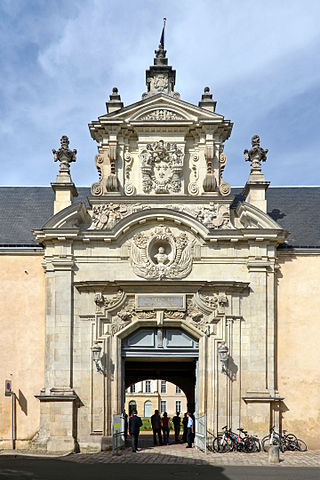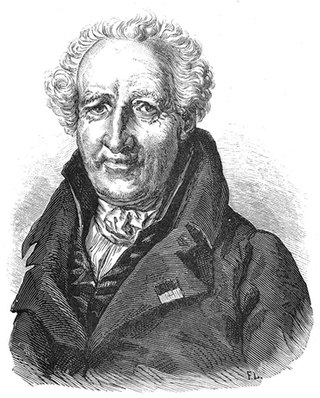
Antoine Laurent de Jussieu was a French botanist, notable as the first to publish a natural classification of flowering plants; much of his system remains in use today. His classification was based on an extended unpublished work by his uncle, the botanist Bernard de Jussieu.

René Antoine Ferchault de Réaumur was a French entomologist and writer who contributed to many different fields, especially the study of insects. He introduced the Réaumur temperature scale.

Antoine Arnauld was a French Catholic theologian, philosopher and mathematician. He was one of the leading intellectuals of the Jansenist group of Port-Royal and had a very thorough knowledge of patristics. Contemporaries called him le Grand to distinguish him from his father.

Étienne Charles de Loménie de Brienne was a French clergyman, bishop, cardinal, politician and finance minister of Louis XVI.
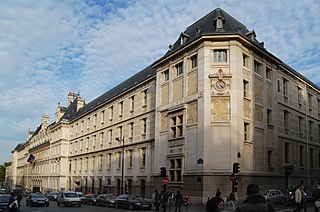
The Lycée Louis-le-Grand, also referred to simply as Louis-le-Grand or by its acronym LLG, is a public Lycée located on rue Saint-Jacques in central Paris. It was founded in the early 1560s by the Jesuits as the Collège de Clermont, was renamed in 1682 after King Louis XIV, and has remained at the apex of France's secondary education system despite its disruption in 1762 following the suppression of the Society of Jesus. It offers both a high school curriculum, and a Classes Préparatoires post-secondary-level curriculum in the sciences, business and humanities.

Antoine Houdar de la Motte was a French author.

Victor de Riqueti, Marquis de Mirabeau was a French economist of the Physiocratic school. He was the father of Honoré, Comte de Mirabeau and André Boniface Louis Riqueti de Mirabeau. He was, in distinction, often referred to as the elder Mirabeau as he had a younger brother, Jean-Antoine Riqueti de Mirabeau (1717–1794).
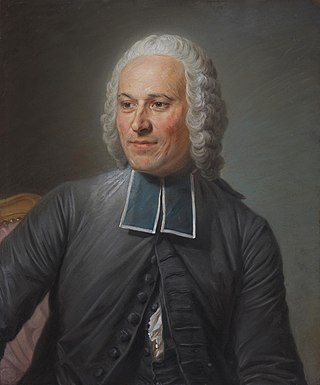
Jean-Antoine Nollet was a French clergyman and physicist who did a number of experiments with electricity and discovered osmosis. As a deacon in the Catholic Church, he was also known as Abbé Nollet.

Jean-Baptiste Descamps was a French writer on art and artists, and painter of village scenes. He later founded an academy of art and his son later became a museum curator.
The Secretary of State of the Maison du Roi was the secretary of state in France during the Ancien Régime and Bourbon Restoration in charge of the Département de la Maison du Roi. The exact composition of the ministry and the secretary's duties changed several times over the Early Modern period, but in general, the Département de la Maison du Roi oversaw four main areas: the "Maison du Roi", the "Bâtiments du Roi", the General Affairs of the Clergy, Affairs of the RPR, and the administration of the capital city of Paris and the provinces. The post later reappeared as the Minister for the Maison du Roi.

The Académie Royale d'Architecture was a French learned society founded in 1671. It had a leading role in influencing architectural theory and education, not only in France, but throughout Europe and the Americas from the late 17th century to the mid-20th.

Antoine Louis was an 18th-century French surgeon and physiologist.
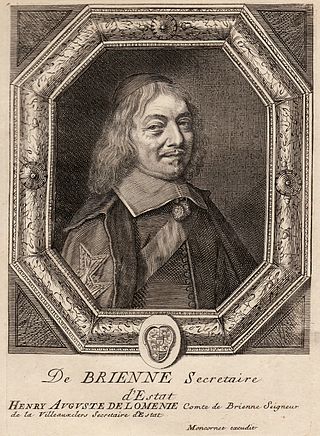
Henri-Auguste de Loménie, Count of Brienne, Seigneur de La Ville-aux-Clercs was a French politician. He was secretary of state for the navy from 1615 to February 1643, and then secretary of state for foreign affairs from 1643 to 1663 under Mazarin during the minority of Louis XIV. From the Loménie family, he was the son of Antoine de Loménie, secretary of state to Henry IV and a Huguenot convert.

Louis-Marie-Athanase de Loménie, Comte de Brienne was a French officer and politician, who was guillotined during the French Revolution.

Étienne Martellange was a French Jesuit architect and draftsman. He travelled widely in France as an architect for the Jesuit order and designed more than 25 buildings, mostly schools and their associated chapels or churches. His buildings reflect the Baroque style of the Counter-Reformation and include the Chapelle de la Trinité in Lyon and the church of Saint-Paul-Saint-Louis in Paris. In the course of his travels he made almost 200 detailed pen drawings depicting views of towns, buildings and monuments. These pictures have survived and provide an important historical record of French towns in the first third of the 17th century.
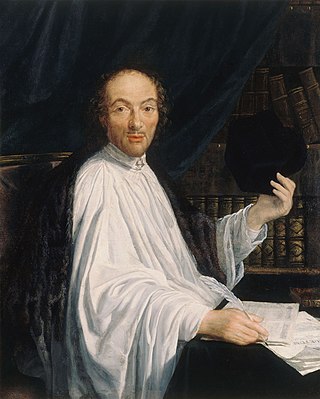
Jean-Baptiste de Santeul was a French poet who wrote in Latin.
Emmanuel Beau de Loménie (1896-1974) was a French journalist and political writer.
Louis Richeome (1544–1625) was a French Jesuit theologian and controversialist. He also wrote under the pseudonyms "Ludovicus de Beaumanoir", "Felix de la Grace", and "Franciscus Montanus".
Claude-Melchior Cornette was a French chemist, physician and apothecary who worked under royal patronage just before the French Revolution drove him into exile. He conducted experimental studies on chemical reactions.







